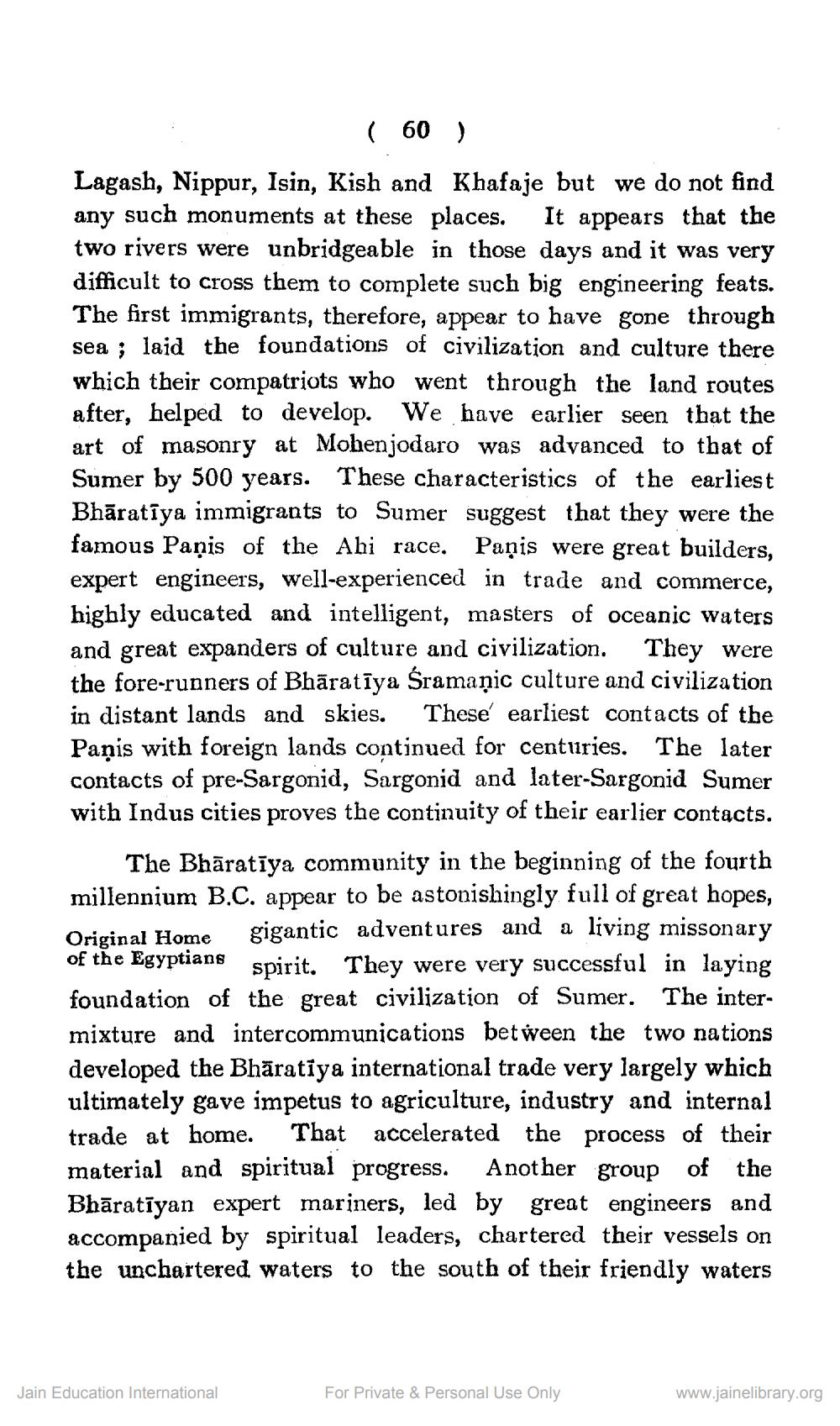________________
( 60 )
Lagash, Nippur, Isin, Kish and Khafaje but we do not find any such monuments at these places. It appears that the two rivers were unbridgeable in those days and it was very difficult to cross them to complete such big engineering feats. The first immigrants, therefore, appear to have gone through sea; laid the foundations of civilization and culture there which their compatriots who went through the land routes after, helped to develop. We have earlier seen that the art of masonry at Mohenjodaro was advanced to that of Sumer by 500 years. These characteristics of the earliest Bhāratīya immigrants to Sumer suggest that they were the famous Panis of the Ahi race. Panis were great builders, expert engineers, well-experienced in trade and commerce, highly educated and intelligent, masters of oceanic waters and great expanders of culture and civilization. They were the fore-runners of Bharatiya Śramanic culture and civilization in distant lands and skies. These earliest contacts of the Panis with foreign lands continued for centuries. The later contacts of pre-Sargonid, Sargonid and later-Sargonid Sumer with Indus cities proves the continuity of their earlier contacts.
Original Home
The Bharatiya community in the beginning of the fourth millennium B.C. appear to be astonishingly full of great hopes, gigantic adventures and a living missonary of the Egyptians spirit. They were very successful in laying foundation of the great civilization of Sumer. The intermixture and intercommunications between the two nations developed the Bhāratiya international trade very largely which ultimately gave impetus to agriculture, industry and internal trade at home. That accelerated the process of their material and spiritual progress. Another group of the Bharatiyan expert mariners, led by great engineers and accompanied by spiritual leaders, chartered their vessels on the unchartered waters to the south of their friendly waters
Jain Education International
For Private & Personal Use Only
www.jainelibrary.org




